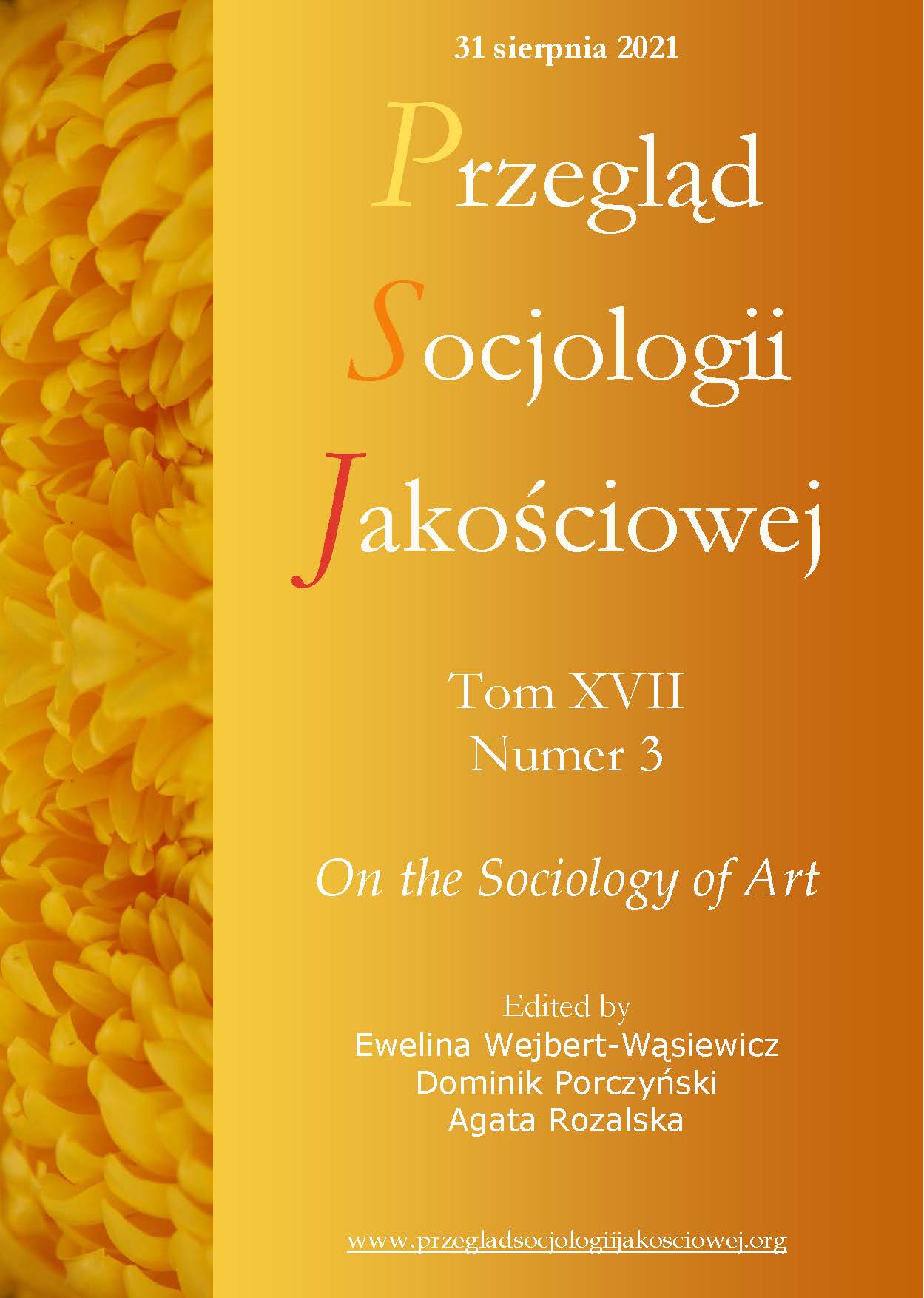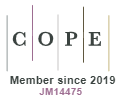Działanie na rzecz społeczności lokalnej. Etnografia hybrydowa karier lokalnych animatorów kultury
DOI:
https://doi.org/10.18778/1733-8069.17.3.09Słowa kluczowe:
animator kultury, metoda dzienniczkowa, etnografia hybrydowa, analiza przestrzenna, rola społeczna, kariera zawodowaAbstrakt
Artykuł, skupia się na nowatorskiej metodologii, jaką wykorzystano do zbierania danych. Wskazujemy, w jaki sposób wykorzystaliśmy metodę dzienniczkową oraz jaki niesie ona z sobą potencjał analityczny. Sygnalizujemy również ograniczenia, które dostrzegliśmy w trakcie badania. Jednocześnie, by nie rezygnować zupełnie z dyskusji nad wnioskami z badania, odtwarzamy wybrane cechy wspólne w karierach zawodowych animatorów kultury. Do relacjonowania i interpretacji otaczającej ich rzeczywistości posłużyła nam hybrydalna metoda badania. Polegała ona na zastosowaniu dzienniczka, w którym badani opisywali fakty i zdarzenia z dnia poprzedniego, a dane o swojej lokalizacji nanosili na mapę Google; notatki wzbogacali o krótkie eseje, materiał fotograficzny i filmowy. Następnie badani animatorzy wzięli udział w podsumowujących indywidualnych wywiadach pogłębionych. Rozważaniom nad użytecznością i innowacyjnością zastosowanych metod etnograficznych towarzyszy refleksja nad zróżnicowaniem doświadczeń animatorów kultury oraz czynnikami wpływającymi na ich zawodowe wybory.
Pobrania
Bibliografia
Bales Kevin 1994. Early innovations in social research: the Poverty Survey of Charles Booth (PhD). London School of Economics.
Google Scholar
Becker, Howard S. and James Carper. 1956. “The Development of Identification with an Occupation.” The American Journal of Sociology 61:289-298.
Google Scholar
DOI: https://doi.org/10.1086/221759
Blau Peter M. 1964. Exchange and Power in Social Life New York: Wiley.
Google Scholar
Bucholc, Marta. 2018. Miejsce poza pojemnikiem. Wstęp do polskiego wydania Socjologii przestrzeni Martiny Löw. Warsaw: University of Warsaw Press.
Google Scholar
Cialdini, Robert. 1995. Wywieranie wpływu na ludzi: teoria i praktyka. Gdansk: Gdańskie Wydawnictwo Psychologiczne.
Google Scholar
Domecka, Markieta and Adam Mrozowicki. 2008. “Robotnicy i ludzie biznesu. Wzory karier zawodowych a zmiana społeczna in Poland.” Przegląd Socjologii Jakościowej 4(1):136-155.
Google Scholar
DOI: https://doi.org/10.18778/1733-8069.4.1.06
Dudkiewicz, Magdalena and Marek Dudkiewicz. 2017. Raport z badania liderów kultury w subregionie radomskim. Warsaw: Fundacja Obserwatorium.
Google Scholar
Fatyga, Barbara. 2014. “Cultural animator [Animator kultury].” In Słownik Teorii Żywej Kultury. Retrieved September 15, 2020 http://ozkultura.pl/wpis/2800/5
Google Scholar
Ferenc, Tomasz. 2001. “Socjologia obrazu, socjologia fotografii - praktyki badawcze.” Przegląd Socjologiczny/ Sociological Review 50(2):81-99.
Google Scholar
Fuller, Martin G. and Martina Löw. 2017. “Introduction: An invitation to spatial sociology.” Pp. 469-491 in Current Sociology Monograph 4/65. Sage.
Google Scholar
DOI: https://doi.org/10.1177/0011392117697461
Gibson, Barbara et al. 2013. “The Integrated Use of Audio Diaries, Photography, and Interviews in Research with Disabled Young Men.” International Journal of Qualitative Methods 12(1):382-402.
Google Scholar
DOI: https://doi.org/10.1177/160940691301200118
Godlewski, Grzegorz et al. 2002. Animacja Kultury. Doświadczenie i przyszłość. Warsaw: Institute of Polish Culture at the University of Warsaw.
Google Scholar
Goffman, Erving. 1961. Asylums. Essays on the Social Situation of Mental Patients and Other Inmates. New York: Anchor Books.
Google Scholar
Gregory, Derek and John Urry, eds. 1985. Social Relations and Spatial Structures. London: Macmillan.
Google Scholar
DOI: https://doi.org/10.1007/978-1-349-27935-7
Hall, Edward. 1976. Ukryty wymiar. Warsaw: Wydawnictwo PIW.
Google Scholar
Homans, George. 1967. The nature of social science, New York.
Google Scholar
Hughes, Everett C. 1958. Men and their work. Toronto: Glencoe, Ill.: Free Press.
Google Scholar
Konecki, Krzysztof. 1988. “Praca w koncepcji socjologii interakcjonistycznej.” Studia Socjologiczne 1/1988:225-245.
Google Scholar
Konecki, Krzysztof. 2012. “Wizualna teoria ugruntowana. Podstawowe zasady i procedury.” Przegląd Socjologii Jakościowej 8(1):12-45.
Google Scholar
DOI: https://doi.org/10.18778/1733-8069.8.1.02
Kozinets, Robert. 2006. “Netnography 2.0.” Pp. 129-142 in Handbook of Qualitative Research Methods in Marketing, edited by R. Belk. Cheltenham, UN, Northampton, MA: Edward Elgar Publishing.
Google Scholar
Krause, Ewa. 2012. Rozwój kariery zawodowej studentów. Konteksty i dokonania. Bydgoszcz: Publishing House of the Kazimierz Wielki University.
Google Scholar
Krzysztofek, Kazimierz and Radosław Bomba. 2011. “Będziemy żyć pod cyfrowym niebem….” Culture and History 19/2011. Retrieved March 11, 2021 http://www.kulturaihistoria.umcs.lublin.pl/archives/2400
Google Scholar
Latour, Bruno. 2010. Splatając na nowo to, co społeczne. Wprowadzenie do teorii aktora-sieci. Cracow: Universitas Publishing House.
Google Scholar
Laughland, Andrew and Lia Kvavilashvili. 2018. “Should participants be left to their own devices? Comparing paper and smartphone diaries in psychological research.” Journal of Applied Research in Memory and Cognition 7(4):552-563.
Google Scholar
DOI: https://doi.org/10.1016/j.jarmac.2018.09.002
Logan, John R. 2012. “Making a Place for Space: Spatial Thinking in Social Science.” Annual Review of Sociology 38:507-524.
Google Scholar
DOI: https://doi.org/10.1146/annurev-soc-071811-145531
Löw, Martina. 2018. Socjologia przestrzeni. Warsaw: Publishing House of the University of Warsaw.
Google Scholar
DOI: https://doi.org/10.31338/uw.9788323533320
Malinowski, Bronisław. 2007. Dziennik w ścisłym znaczeniu tego wyrazu. Warsaw: Wydawnictwo Literackie.
Google Scholar
Nowak, Marek. 2015. Teoria nieracjonalnego działania. Socjologiczne studium na temat wolontariatu i społecznego aktywizmu. Poznan: Wydawnictwo UAM.
Google Scholar
Nowosielski, Michał and Marek Nowak. 2008. Jak badać społeczeństwo obywatelskie? Doświadczenia praktyków. Poznan: Wydawnictwo UAM.
Google Scholar
Nóżka, Marcjanna and Natalia Martini. 2015. “Metody mobilne i wizualne w praktyce badawczej: zastosowanie fotospaceru w socjologicznych badaniach map mentalnych i zachowań terytorialnych ludzi.” Przegląd Socjologii Jakościowej 11(4):34-50.
Google Scholar
DOI: https://doi.org/10.18778/1733-8069.11.4.02
Olechnicki, Krzysztof. 1999. “Obraz i wizualność w naukach społecznych.” Kultura i społeczeństwo 3:39-71.
Google Scholar
Ossowska, Maria. 2020. Ethos rycerski i jego odmiany. Warsaw: Wydawnictwo Naukowe PWN.
Google Scholar
Pink, Sarah. 2008. “Walking with video.” Visual Studies 22(3):240-252.
Google Scholar
DOI: https://doi.org/10.1080/14725860701657142
Poczykowski, Radosław. 2006. “Między socjologią a kartografią, czyli: mapa w głowie ER(R)GO.” Teoria–Literatura– Kultura 2(13):9-21.
Google Scholar
Przybylski, Liz 2020. Hybrid Etnography. Online, Offline, and in Between. Thousand Oaks: SAGE Publications.
Google Scholar
Rodríguez-Amat, Joan R. and Cornelia Brantner. 2016. “Space and place matters: A tool for the analysis of geolocated and mapped protests.” SAGE- new media and society 6(18):1027-1046.
Google Scholar
DOI: https://doi.org/10.1177/1461444814552098
Seim, Josh. 2019. Hybrid Ethnography: Mixing Participant Observation and Observant Participation. Speech at a conference American Sociological Association.
Google Scholar
Simmel, Georg. 1997. “The sociology of space.” Pp. 137-170 in Simmel on Culture, edited by D. Frisby and M. Featherstone. London: SAGE.
Google Scholar
Stage, Carsten, Bridgit Eriksson, and Camilla M. Reestorf. 2019. “Understanding cultural participation through participation – inventiveness, multivalence and epistemic modernization.” Cultural Trends 1(29):19-34.
Google Scholar
DOI: https://doi.org/10.1080/09548963.2019.1692183
Stańczak, Gregory C., ed. 2007. Visual Research Methods Image, Society, and Representation. Thousand Oaks, New Delhi, London, Singapore: Sage Publications.
Google Scholar
Šveda, Martin and Michala Madajová. 2015. “Merging diaries and GPS records: The method of data collection for spatio-temporal research.” Moravian Geographical Reports 2(23):12-25.
Google Scholar
DOI: https://doi.org/10.1515/mgr-2015-0007
Weber, Max. 2002. Gospodarka i społeczeństwo. Warsaw: PWN.
Google Scholar
Weber, Max. 2011. Etyka protestancka i duch kapitalizmu. Warsaw: University of Warsaw Publishing House.
Google Scholar
DOI: https://doi.org/10.31338/uw.9788323528135
Voilmy, Dimitri, Zbigniew Smoreda, and Cezary Ziemlicki. 2008. “Geolocation and Video Ethnography: Capturing Mobile Internet used by a Commuter.” Mobilities 3(2):201-222.
Google Scholar
DOI: https://doi.org/10.1080/17450100802095304
Wiśniewski, Rafał 2012. “W przestrzeni kultury i natury. Kilka uwag wstępnych o praktykach społecznych i świadomości ekologicznej.” Politeja 20(2):155-169.
Google Scholar
Wiśniewski, Rafał et al. 2021. Oswajając zmienność. Kultura lokalna z perspektywy domów kultury. Warsaw: National Centre for Culture.
Google Scholar
Żuchowska-Zimnal, Gabriela. 2013. “Socjologia wizualna kluczem do (samo)poznania.” Półrocznik Nauka i Szkolnictwo Wyższe 1(41):100-116.
Google Scholar
Pobrania
Opublikowane
Jak cytować
Numer
Dział
Licencja

Utwór dostępny jest na licencji Creative Commons Uznanie autorstwa – Użycie niekomercyjne – Bez utworów zależnych 4.0 Międzynarodowe.














